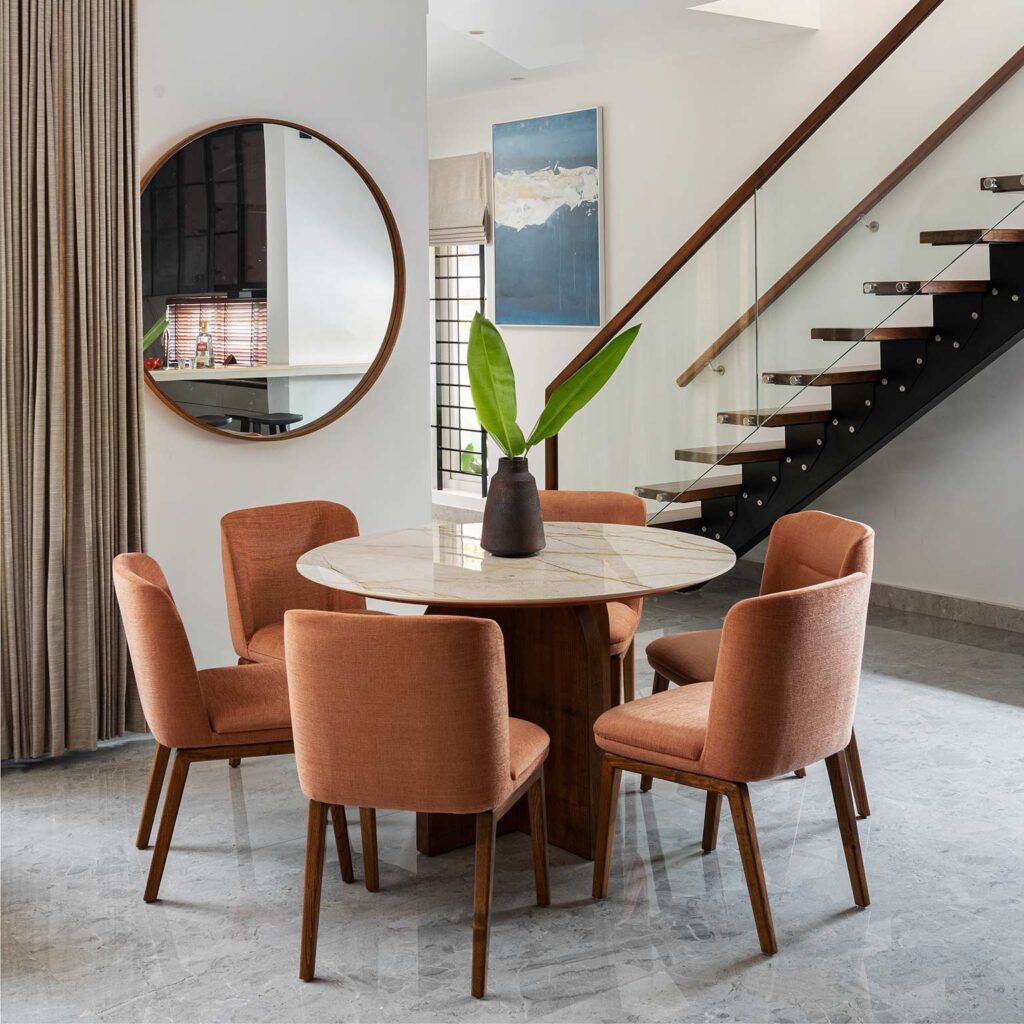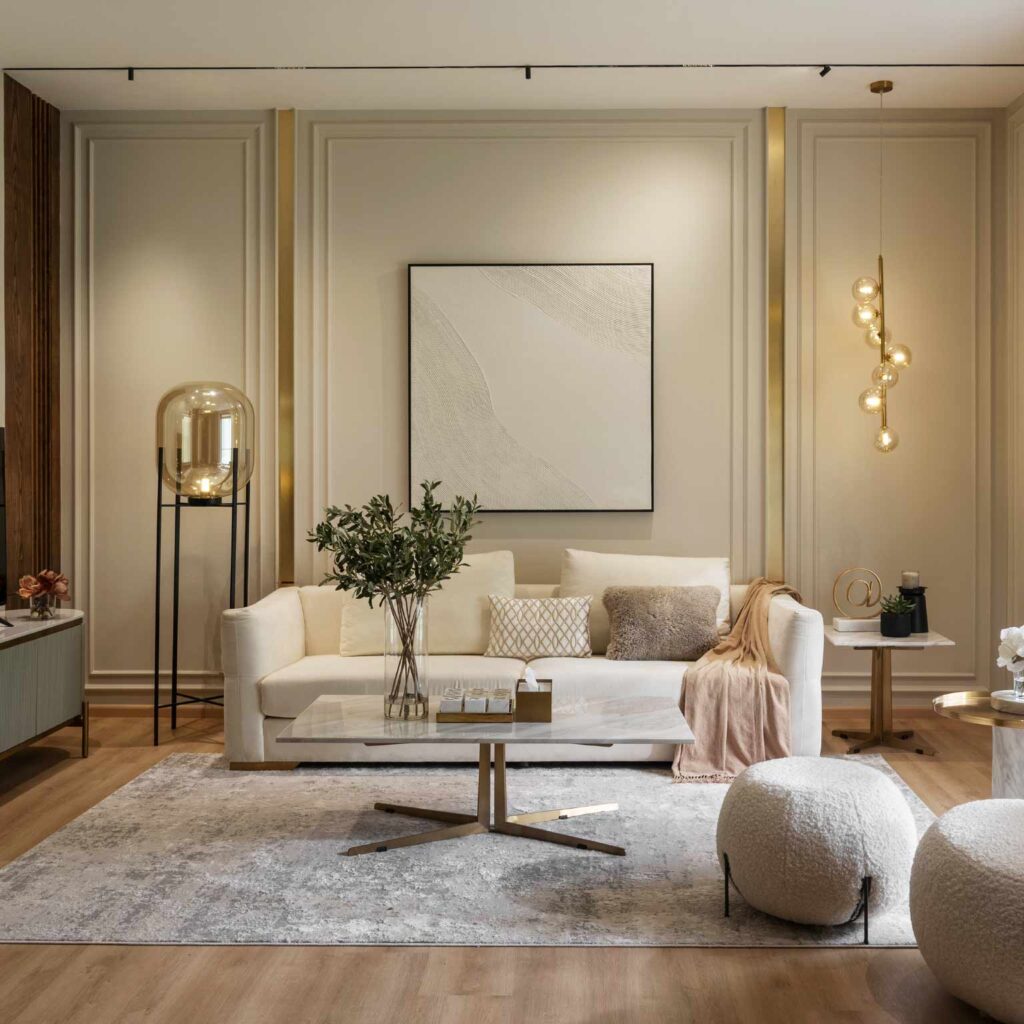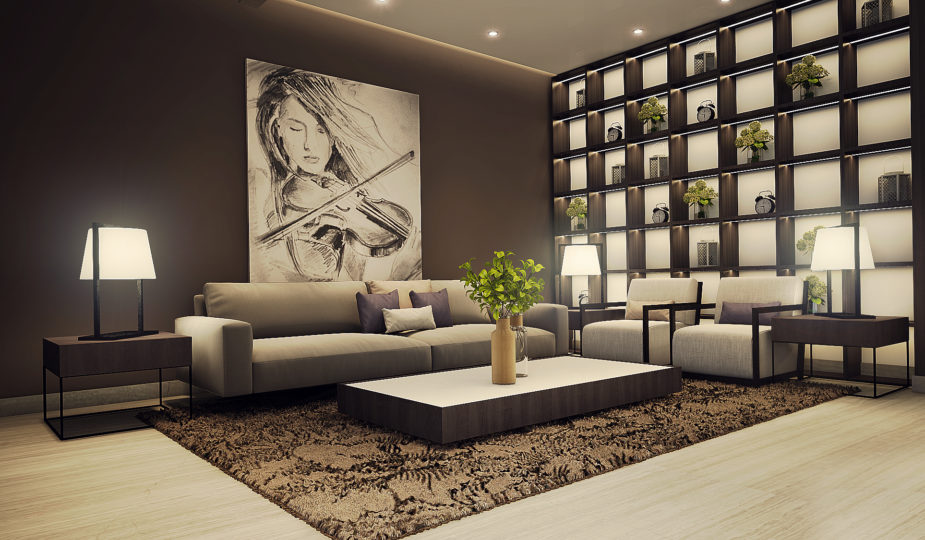Lighting is everything when it comes to interior design. It plays a big role in how your client looks and experiences a space. The placement, intensity, and color will all add to a well-balanced design. Lighting design is not only restricted to artificial light, however. Natural light should be taken benefit of whenever possible, even if there isn’t much to work with. Incorporating various types of lighting in your plans will enable you to create fun spaces for your clients.
Dining room lighting
A dining room or dining area is where your client’s family and guests will sit down for refreshments. As the designer of the space, you’ll have to ensure it is as welcoming as possible, and the most reliable way to do that is to install a statement light above the dining table. A chandelier or pendant light(s) will do the trick, but do not limit the lighting to just that. Layered lighting in any room works best, and the dining area is no separate. Wall sconces, track lighting, and recessed lights work well in dining areas to give extra lighting, so do not wait to include those in your lighting design.

Bathroom lighting
Proper lighting makes all the variation in a bathroom. The bathroom is apparently where your clients get ready in the morning. They groom themselves in the bathroom, which is why there should be enough lighting to support them in their daily routines. One of the worst things you can make in a bathroom is to place a light source above the vanity mirror. This will result in undesired shadows and awkward glare on your clients’ faces, which is undesirable, to say the least. Placing sconces at eye level on both sides of a mirror is the right way to light up the vanity area.
Living room lighting
Unlike other rooms in the house, the living room can serve many different purposes. A living room can be used to watch TV, read, play board games, do homework, welcome guests. You need to make sure you ask your customers what they use the space to design for lighting. Task lighting such as an arched lamp behind the couch or armchair is useful if your customers read in their living room. Accent lighting is also a good idea if your clients have art or a plant they’d like to perform.

Bedroom lighting
The best lighting design advice for bedrooms is that you are not restricted to just one ceiling light fixture. There is a type of bedroom lighting options that can create a warm, relaxing and inviting atmosphere for your client. For example, instead of a ceiling light fixture, you can opt for low-hanging pendant lights or sconces on either side of the bed. You don’t need to reduce the ceiling light, though. You can complement a decorative ceiling light fixture with a pair of table lamps on each nightstand. Light symmetry works wonders in a bedroom.

